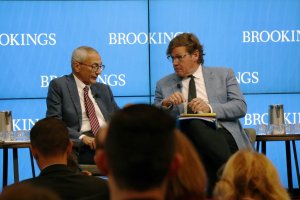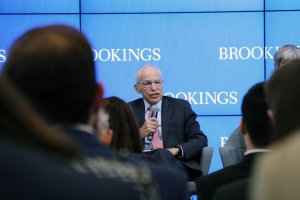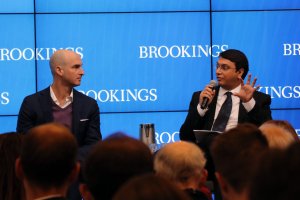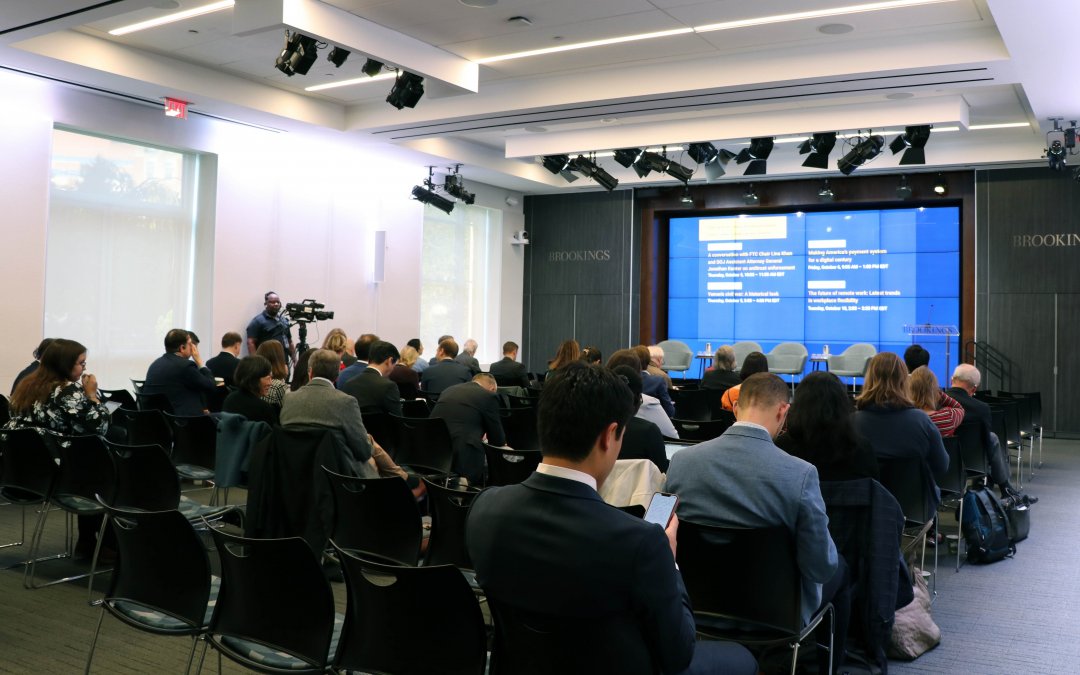WASHINGTON — The Biden administration has been touting the success of the Inflation Reduction Act since its passage one year ago, but whether it has reduced the country’s reliance on China has been hotly debated.
The law, which passed solely with Democratic votes, created a $490 billion pot of federal tax incentives to encourage companies to invest in clean, renewable energy. At the heart of the legislation is a push to build new, emissions-free electricity sources, like wind and solar farms, and electric vehicle manufacturing plants, with the goal of creating more good-paying jobs and bolstering the U.S. economy.
But the law has been a favorite target of Republican criticism during committee hearings, stump speeches on the campaign trail and press releases. One central argument is that the policies shift dependence on the Middle East to China, which dominates the supply chains for many of the components used in clean energy technologies.

Senior Advisor to the President for Clean Energy Innovation and Implementation, John Podesta (left), speaks on the progress made so far, as a result of the IRA, to reduce the impacts of climate change. (Kunjal Bastola/MNS)
John Podesta, senior adviser to Biden for clean energy innovation and implementation, disputed the notion that the law is having that effect.
“We’re working with our allies around the world — from the E.U. to South Korea — to secure reliable supplies of critical minerals,” he said on Wednesday during a panel discussion at the Brookings Institution. “We need to friend shore sustainable, secure, resilient global supply chains for clean energy that breaks our collective reliance on China for production of those, particularly those upstream technologies.”
But Kenneth Lieberthal, a senior fellow emeritus of foreign policy at the Brookings Institution, said the U.S. must engage with China rather than cut the country off to fight climate change.
He acknowledged that China has used unfair trade practices and hidden subsidies in the past, but added it was important to build on the advances it has made.
“For us to go [into this climate work] and not deal with the Chinese — cooperate with them where we can buy from them or license technology from them when we must — is simply to delay our transition and our capacity to deal with these problems more on our own,” Lieberthal said.

Kenneth G. Lieberthal discusses the global implications of the IRA, specifically U.S. relations with China. (Kunjal Bastola/MNS)
One of the Biden administration’s goals under the IRA is to reach 100 percent clean electricity by 2035. To reach that target, the U.S. needs to deploy high-performance transmission lines at twice the current pace. This requires permitting – like environmental reviews and technical analysis – which can take anywhere from four to 10 years.
“We need to build a lot of infrastructure to actually materialize those gains that the IRA is promising,” said Sanjay Patnaik, an economist and director of the Center on Regulation and Markets at Brookings. “And if you really want to build a lot of these infrastructures, like transmission lines and power generation, you need to speed up [the permitting process] much more.”
Podesta said the Biden administration is using every tool at its disposal to accelerate the federal permitting process but agreed that the process needs to be improved.

Sanjay Patnaik (right) discusses the economics behind the IRA, citing the need to speed up the process of building infrastructure. (Kunjal Bastola/MNS)
The labor shortage in the United States has also presented challenges. The White House says the IRA has already created over 170,000 clean energy jobs and could create more than 1.5 million over the next decade, but there is a lack of money committed to training people to fill these roles, said Adie Tomer, a senior fellow at Brookings Metro.
“America is multiple decades deep in an education system that really overpromoted four-year degrees at the expense of other skill development, and we’re now seeing the deserts of that,” Tomer said. “We need new kinds of metropolitan scale or regional scale partnerships between local government workforce intermediaries and employers, from both the public and private sector.”
But he noted that the federal government, including the Department of Labor, is setting up regional workforce training that can address that issue.
Yet despite the partisan criticisms, Podesta was quick to point out the long-term benefits of the IRA.
Podesta said the IRA is expected to drive down the cost of clean energy technologies by as much as 25% worldwide, which will help make “every dollar go further across the globe.”
“These are real results for the economy, for our planet, and for the American people,” Podesta said.


